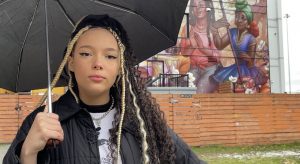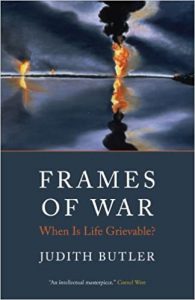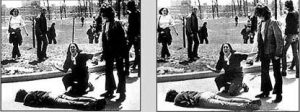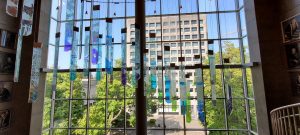As I was queuing for yet another match of Valorant late one night, I debated which character I should play. As the wait time continued, my thoughts wandered, and I thought more about character design and how Valorant chose to represent different ethnic and national backgrounds. This made me remember Barbara Lee’s talk on Asian representation in the Media which made me consider the importance of Asian representation in Valorant through characters.
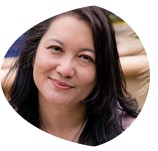
Photo of Barbara Lee from https://vaff.org/board-of-directors/
For the purposes of this blog, I define Asian representation as how Asian people, culture, locations are portrayed in media. As mentioned by Barbara Lee in her talk, Asian representation in the media has not shown an accurate representation of the diversity and nuance of Asian people and culture. This article exhibits that the way that Asians are portrayed in the media impacts how they are perceived in real life. Therefore, having an accurate depiction of Asians in media is imperative but unfortunately, there hasn’t been much accurate portrayal in the past. As a form of media, Valorant integrates Asian representation into the game almost seamlessly. One of the ways that Valorant does this is through it’s agents which I will analyze by using Barbara Lee’s list of actions for access and equity to determine if Valorant’s way of representing Asians is a step in the right direction.

From left to right: Neon, Sage, Jett from Valorant. https://playvalorant.com/en-us/media/wallpapers/
So… what is Valorant and how is it played?

Photo of 5 Agents from Valorant (https://www.riotgames.com/en/DevRel/valorant-api-launch)
Valorant is a strategic online shooter game that is currently very popular. It’s played with two teams of 5 players, with each player choosing a character to play as and each match will take place on one of several maps. The teams are either ‘attacking’ or ‘defending’ sites. The goal of the attacking team is to get onto a site and plant the ‘spike’ before a timer runs out while the defending team tries to prevent this from happening. Teams can also win rounds in Valorant by eliminating the opposing team by using a variety of both weapons and abilities. In a typical match, teams will play first to 13 wins with each round being worth one point. Valorant has e-sports matches around the world in which players can compete to earn prize money for winning, people that play the game daily for fun, and people that enjoy watching the game.
Currently, Valorant has 21 characters for players to choose from. Each agent has a unique appearance, playstyle, and story of where they originate from. Valorant seems to hold the characters’ countries of origin at high value as the country is always mentioned at the start of each character’s description. For my analysis on Asian representation and how it fits into Barbara Lee’s actions for access and equity, I will focus on the four agents that are from countries in Southeast Asia.
These characters are Sage, Jett, Neon, and Yoru.

Sage https://playvalorant.com/en-us/media/wallpapers/
Sage is from China and is portrayed as a leader with defensive and healing abilities.
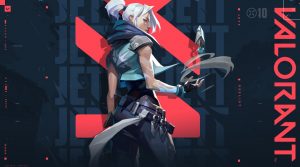
Jett https://playvalorant.com/en-us/media/wallpapers/
Jett is from South Korea and uses a combination of daggers and wind themed abilities.
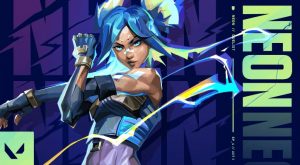
Neon https://playvalorant.com/en-us/media/wallpapers/
Neon hails from the Philippines and has lightning abilities.

Yoru https://playvalorant.com/en-us/media/wallpapers/
Yoru originates from Japan and his abilities revolve around deception and teleportation.
I will use the actions for access and equity from Barbara Lee’s Community Engaged Learning talk to analyze Asian representation through the characters in Valorant. This will allow me to understand how well this very popular and influential game has represented Southeast Asians.

The first point in Barbara Lee’s actions for access and equity is to have “characters that defy stereotypes, even if stereotypes are seemingly ‘positive’.” The stereotypes and tropes are different for Asian men and women, but both perpetuate incorrect perceptions of the Asian community. Additionally, these characters tend to be not fully fleshed out. For example, some stereotypes and tropes for women are the tiger mom, submissive, or the prostitute while for men they can be the computer nerd, wise sensei, or martial artist. In Valorant, all of these characters do not fit into these stereotypes/tropes and have their own personality and backstory. For example, Yoru is confident in his skills, is slightly arrogant, likes to look sharp, and gives the impression that he likes to work alone. None of these traits fit into any stereotype.
The second point is to “portray more Asian diversity”. I feel that given that there are currently only 21 agents, having four agents that originate from four different Southeast Asian countries is alright. There could be more but since Valorant is still growing as a game, more characters will eventually be added. There is definitely a possibility that Valorant will choose to represent more Asian countries.
The next point urge for there to be “more Asian … characters in positions of power and leadership on-screen”. All of the characters in Valorant are fairly equal in terms of abilities as each agent has their strengths and weaknesses when being played in game. However, in terms of the agents backstories, Sage is portrayed as a leader. This is shown in multiple ways from in game voice lines to how she is shown in Valorant’s videos which add more to the story of the game. In their cinematic video Warm Up, Sage is shown at the end of the video to end a fight before gathering other agents for departure.

Neon Running https://playvalorant.com/en-us/media/wallpapers/
The last point that can apply to Valorant encourages hiring more “Asians in behind-the-scenes positions”. These agents are all voiced by people from their nation which means that there is accurate linguistic representation. In addition, these agents’ in game voice lines have included some words or phrases from the agent’s nation. For example, Neon will sometimes say “Ingat ka” or “Tara na” which means ‘take care’ and ‘let’s go’ in Tagalog respectively. These phrases are always combined with some English, so players still have an idea about what she’s saying even if they don’t speak Tagalog. This means that part of the culture is shared with people that may not typically interact with it and promotes diversity and equity.
Valorant has an established fanbase, which means that the way Valorant chooses to depict and represent agents will be seen by many people and shape their perceptions of Asian people.

